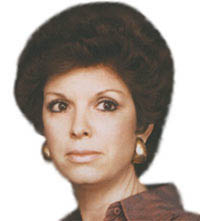Science from a Christian Perspective
By Joyce Swann
Printed in Practical Homeschooling #29, 1999.
 How to teach science from a Christian perspective - using secular books.
How to teach science from a Christian perspective - using secular books.

|
 |
 Because we always used correspondence courses with a complete curriculum, I was never able to choose my children's texts. The children were tested on the assigned material, and those tests were sent to the schools where they were graded by various teachers. While these correspondence programs had distinct advantages, they also had one huge drawback - they forced me to work within perimeters established by textbook authors who often held an anti-Christian bias.
Because we always used correspondence courses with a complete curriculum, I was never able to choose my children's texts. The children were tested on the assigned material, and those tests were sent to the schools where they were graded by various teachers. While these correspondence programs had distinct advantages, they also had one huge drawback - they forced me to work within perimeters established by textbook authors who often held an anti-Christian bias.
In the first three grades, this posed few problems since history had not yet been introduced, and science consisted of the most basic kinds of lessons. Even at this level, however, the problem of how to teach from a Christian perspective became evident. Yet, I was not the one who first recognized the dilemma.
When my son Christopher was in the second grade, one of our science lessons instructed me to ask him whether people are animals, plants, or minerals. Without hesitation, he responded that people are humans.
"Yes," I replied, "But which of these groups do we belong to?" I then showed him the pictures in the text of some tigers, a flower, and a rock.
"Now," I tried again, "which one of these groups do you think we belong to?"
"We don't belong to any of them," he insisted.
I was beginning to feel frustrated, so I decided to just give him the answer: "People are animals. We need all the things that other animals need, such as food, and water, and air. We grow and have babies. We are not exactly like other animals because we are the highest form of animal, but we are animals."
Christopher stood his ground. "We are not animals. People are something different from everything else. We are humans, and we are in a group all by ourselves."
I feared that we were at an impasse, but as I pondered what I should say next, the lights suddenly came on, not for him, but for me. As I sat looking at my son, I realized that what he was saying was true. We are not animals; we are humans, and we are made in the image of God! "You're right," I said. "We're in a group all by ourselves."
From that day on, I made a special effort to look for the anti-Christian bias that is present in so many textbooks and to make my children aware that much of what passes for science is not science at all. I wanted them to know that nothing that is provable conflicts with the Bible; the problem areas are theories that have not and cannot be proven. I believed that it was my responsibility to point out the weaknesses in the various theories so that my students would realize that to accept them as science one must assume a very unscientific position.
Actually, this was not difficult, since the weaknesses in the theories can easily be discovered by simply reading the texts that promote them.
As we moved into the higher grades, I drew careful lines of distinction between the two types of sciences. For instance, physics deals with matter and energy and their interactions and is based on measurement and mathematical process. Chemistry deals with the composition, properties, and structure of substances and the changes that they undergo. These are provable by putting a pencil to paper or by conducting experiments.
However, sciences such as geology and anthropology contain much that can never be proven. For example, radiocarbon dating claims to verify the age of rocks, bones, etc., less than 50,000 years old. It is based on residual radioactive carbon-14 present in a specimen.
One of several problems with carbon-14 dating is that it assumes that the influx rate of cosmic rays is constant and that the amount of carbon-14 present today in living things also applied to the living things of ancient times. If the production rate has varied, the assumption is invalid.
The list of "problems" associated with this process goes on and on, but high school and college texts insist that it is a reliable method of dating specimens.
It is clear that radiocarbon dating is yet another example of theory masquerading as science, and that is exactly how it should be taught.
For the home teacher, teaching science is not very different from teaching any other subject. The challenge is not to find a text that agrees with our personal religious beliefs. The challenge is to separate fact from fiction and to shine the light of truth on every lesson.
We do not have to be afraid that the conflict between the Bible and science will interfere with our children's faith; there is no conflict between the Bible and true science. The conflict is between the Bible and theories formulated to disprove the Bible. If we teach our science lessons openly and honestly, the Bible will always emerge as the winner.